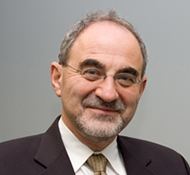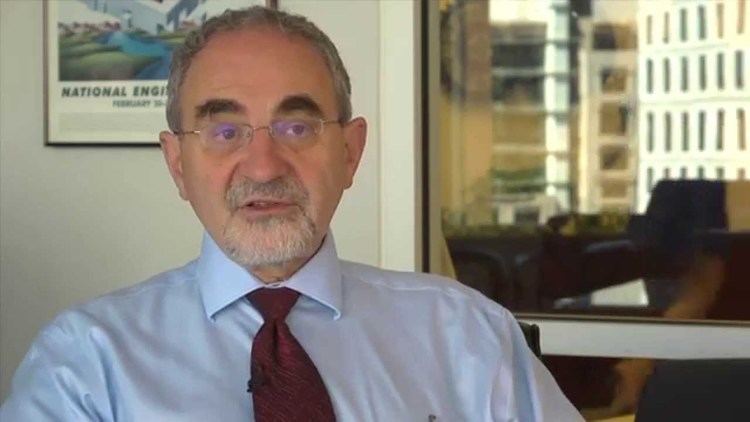Known for Photonic Crystal Name Eli Yablonovitch | Role Physicist | |
Institutions McGill UniversityHarvard UniversityBell Telephone LaboratoriesExxonBell Communications ResearchUniversity of California, Los AngelesUniversity of California, Berkeley Alma mater McGill UniversityHarvard University Fields Physics, Electrical engineering | ||
Leading scientists discuss converging technologies eli yablonovitch uc berkeley
Eli Yablonovitch (born 15 December 1946) is an American physicist and engineer who, along with Sajeev John founded the field of photonic crystals in 1987. He and his team were the first to create a 3-dimensional structure that exhibited a full photonic bandgap, which has been named Yablonovite. In addition to pioneering photonic crystals, he was the first to recognize that a strained quantum-well laser has a significantly reduced threshold current compared to its unstrained counterpart. This is now employed in the majority of semiconductor lasers fabricated throughout the world.
Contents
- Leading scientists discuss converging technologies eli yablonovitch uc berkeley
- Newton lecture 2015 professor eli yablonovitch
- Education
- Career
- References
Newton lecture 2015 professor eli yablonovitch
Education

Yablonovitch received his B.Sc. in physics from McGill University in 1967. He went on to receive his A.M. degree in applied physics from Harvard University in 1969, and his Ph.D. from Harvard in 1972. During his post-graduate studies, Yablonovitch worked on nonlinear optics with carbon dioxide lasers.
Career

After receiving his Ph.D., Yablonovitch worked at Bell Laboratories. He then became a professor of applied physics at Harvard in 1974. In 1979, he joined Exxon research center to work on photovoltaic research for solar energy. While working at Exxon, Yablonovitch derived the 4 (n squared) factor as the theoretical limit for light trapping in photovoltaics. This is now used worldwide in almost all solar panels.

Yablonovitch joined Bell Communications Research in 1984, and became its director of solid-state physics research in 1991. During his time at Bell Communications, Yablonovitch did his pioneering work on photonic crystals.
Yablonovitch became a professor of electrical engineering at UCLA and continued to study and develop photonic crystals and photonic bandgap materials. As of July 2007, he has joined the Electrical Engineering and Computer Sciences department at UC Berkeley. His research topics include silicon photonics, telecommunications, optical antennas, new applications of photovoltaics, and searching for a low-voltage replacement for the transistor.
Yablonovitch has co-founded multiple companies related to his research interests. In 2000, he co-founded Ethertronics Inc. Ethertronics is a cell phone antenna manufacturer that has, to date, shipped over 1.7 billion antennas.
In 2001, Yablonovitch co-founded Luxtera Inc., a semiconductor company that makes electro‑optical systems using silicon photonics, manufactured with CMOS processes. Luxtera is the first company to market foundry-based silicon photonics.
Yablonovitch co-founded Luminescent Inc. in 2002. Luminescent provided sophisticated mathematical optimization for use in photolithography masks. Luminescent was acquired by Synopsys in 2012.
In 2008, Yablonovitch founded Alta Devices Inc. with Harry Atwater. Alta Devices produces thin-film gallium arsenide photovoltaic cells for solar energy. In 2011, Alta set the efficiency world record for single junction solar cells at 28.8%, and dual junction solar cells at 31.5%; all at 1 sun illumination.
He is a Fellow of the IEEE, the OSA, and the APS.
He was elected a member of the National Academy of Sciences, the National Academy of Engineering, and the American Academy of Arts and Sciences, and a Foreign Member of the Royal Society of London.
He is a recipient of The IEEE "William R. Cherry Award", the IEEE's highest award in solar cells, The Oliver E. Buckley Condensed Matter Prize, The Isaac Newton Medal, The Rank Prize, The Harvey Prize, The IEEE Photonics Award, The Mountbatten Medal of the British IET, The R. W. Wood Prize, the W. Streifer Scientific Achievement Award, The Julius Springer Prize, and Adolph Lomb Medal.
